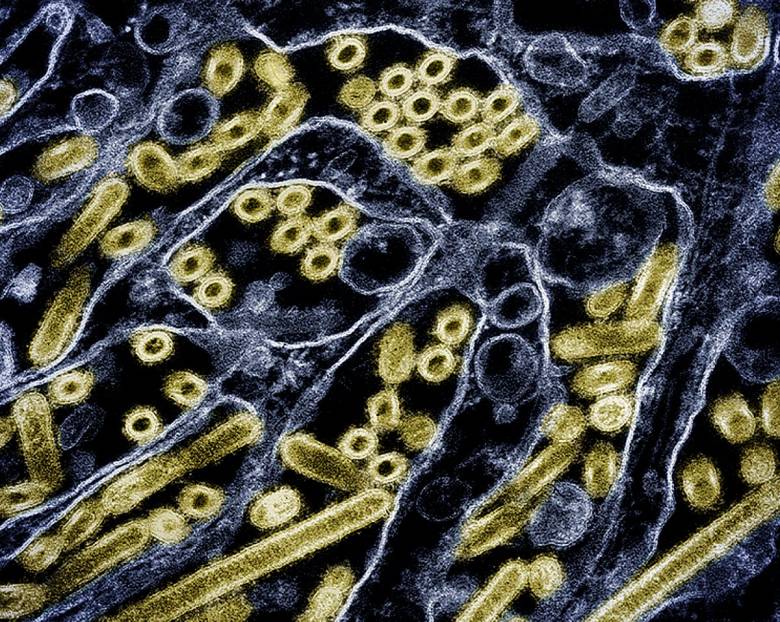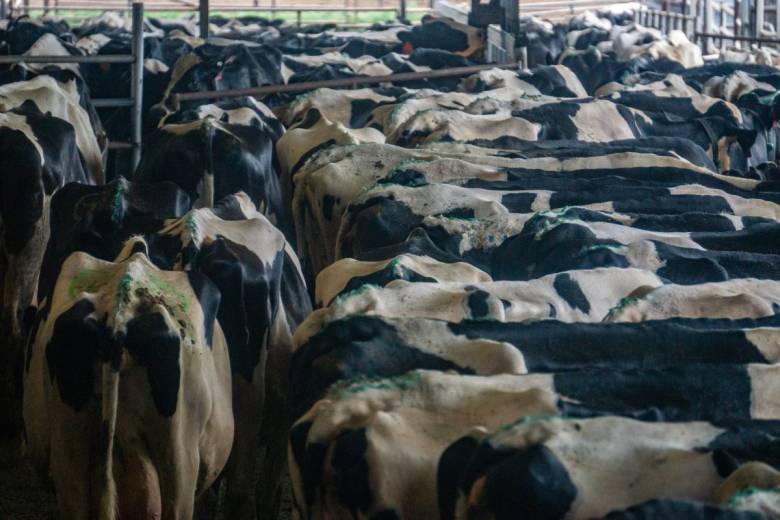Colorado’s bird flu outbreak among dairy cows is now the worst in the nation, with more cases in the past month than in any other state, according to the latest state and federal data.
As of Monday night, Colorado had identified 26 flocks with avian influenza. Of those, 22 were identified in the past month and the flocks remain under quarantine. Four more cases were identified earlier and the quarantines have since been lifted.
All affected herds are in the northeastern part of the state.
The rapid and still largely mysterious spread of the virus in Colorado, a state far from a major dairy producer, is adding to concerns that U.S. health officials are not doing enough to contain the virus. While the threat to humans is currently very low, infectious disease experts worry that the longer the virus spreads unchecked among animals, the greater the risk that it will mutate and become more dangerous to humans.
State veterinarian Dr. Maggie Baldwin said Colorado agriculture and health officials are working closely with dairies to identify cases of the virus and try to prevent its spread.
“This is just a virus that likes to hang around,” she said. “It’s very difficult to mitigate once it’s in a stable population. (…) I think if we all implement very strict biosecurity measures, we can absolutely prevent its spread, but it’s a very close geographic region.”
Colorado’s numbers are the best in the country
Colorado’s recent cases far outpace those of any other state: Iowa and Idaho are the only other states to have recorded double-digit case totals in the past month, with 12 and 10, respectively.
Colorado’s total number of bird flu cases since the flu was first identified in dairy cows this spring ranks the state second in the nation, behind Idaho and one ahead of Michigan. But Colorado ranks far lower than those states in milk production: The state was 13th in the nation for milk production in 2023, according to federal data.
Colorado has just over 100 dairy herds, meaning the bird flu outbreak has now affected a quarter of all herds in the state. On a per-cow basis, Colorado’s outbreak is about three times as severe as Idaho’s, which has about 667,000 dairy cows compared to Colorado’s 201,000.
Baldwin suggested that Colorado’s efforts to detect the disease may be reflected in the state’s high numbers. She said the state has put a lot of effort into getting information out to dairy farmers, as well as industry associations and veterinarians.
“We really try to encourage early diagnosis, early reporting and really good monitoring of symptoms,” she said, “and I think the relationships we’ve built in the state have allowed producers to feel like they can come to us when they have a problem.”
Baldwin said most cattle infected with bird flu recover from the disease. Although she doesn’t have exact numbers, she hasn’t heard of unusual mortality rates. But farmers suffer production losses during periods of infection, and she said some cattle may not return to full milk production.
“The more we see our producers being impacted by this, the more they take it seriously and say, ‘We really want to do what we can to stop this and be good neighbors,’” Baldwin said.
How bird flu spreads
Bird flu, as its name suggests, is not a virus that typically infects livestock, and initial “spillover” infections are thought to have been caused by wild birds roaming around Texas dairy farms.
The subsequent spread of the disease to dozens of herds in at least 12 states was initially blamed on the movement of cows from one farm to another. Federal agricultural officials cracked down on that movement by requiring that animals crossing state lines be tested.

But as the outbreak persists, a more complex picture of its spread is emerging.
Baldwin said some of the affected cattle in Colorado are in what are called “closed herds,” meaning there is no movement of cattle in and out, making it impossible for the virus to spread within that herd through the introduction of an infected cow. U.S. agriculture officials have seen something similar in several Michigan herds.
Attention is now turning to the possibility of fomite transmission, in which the virus is spread on an inanimate object. In this case, workers or veterinarians moving from farm to farm could inadvertently carry the virus on their clothing or equipment as they move from farm to farm.
Baldwin said the state is working with dairy operators on detailed biosecurity plans for their dairies. That includes a lot of personal protective equipment — not just masks, goggles and face shields for workers, but also booties and coveralls that can be discarded before leaving a farm. It also includes plans for cleaning tires from vehicles or other pieces of equipment leaving the dairy.
Hundreds of people under surveillance
No human cases of bird flu linked to exposure to infected livestock have been identified in Colorado. But state and local health officials have been monitoring hundreds of dairy industry workers after possible exposure to the virus.
In accordance with federal guidelines, the state is only testing people with flu-like symptoms. Scott Bookman, senior director of public health preparedness and response at the Colorado Department of Public Health and Environment, said the state has tested fewer than a dozen people. All of those tests have come back negative.

Given that only three people nationwide have tested positive for a case of bird flu that likely came from exposure to infected dairy cows — one in Texas and two in Michigan, all of whom had minor symptoms — Bookman defended the state’s testing approach.
“There is simply no reason at this point to do any broader type of asymptomatic testing,” he said.
Elizabeth Carlton, an epidemiologist at the Colorado School of Public Health, says the risk to the general population is currently low. Systems designed to detect a spike in flu infections through hospital data and wastewater testing have not set off alarms. Pasteurized milk (the kind sold in grocery stores) is safe to drink, but raw milk may not be.
“We need to raise the level of public concern when we see dairy farm workers getting infected and passing the disease on to their families,” she said.
However, she added, it is now time for public health agencies to ensure that their disease detection and surveillance systems are working properly, so they can detect whether current outbreaks of avian influenza in livestock are turning into a threat to humans.
“As a citizen, I don’t think the level of concern is that high right now,” she said. “But for public health, for people who work in infectious diseases, that’s exactly what we need to be working on right now.”